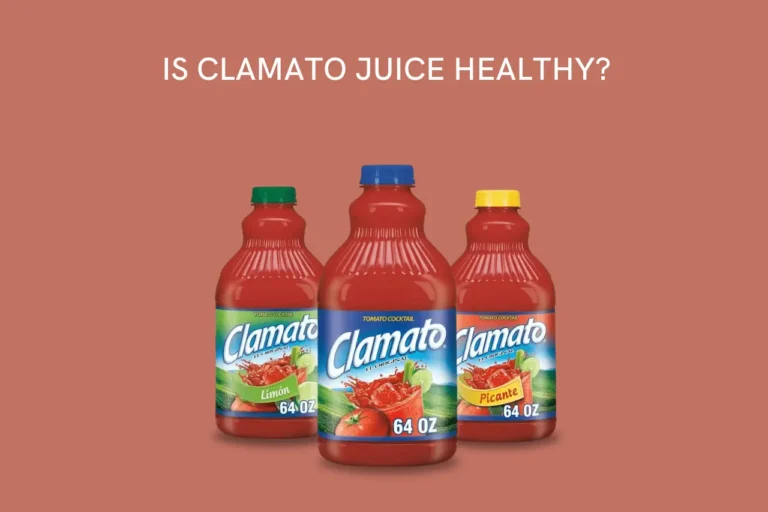If you’re someone who is constantly in a rush with meals and often searches for a quick and satisfying option, you might be familiar with Maggi Pazzta.
Maggi Pazzta is a type of instant pasta manufactured by Nestle under the Maggi brand. It comes in various flavors such as cheese macaroni, tomato twist, mushroom penne, and masala penne.
And while it’s a convenient and delicious way to enjoy your meal, Is Maggi Pazzta healthy?
Short answer: Maggi Pazzta is not entirely healthy as it is low in fiber and high in sodium. In addition, It’s tastemaker contains highly processed ingredients like maltodextrin and palm oil. However, it is a better option than Maggi noodles and can be consumed in moderation.
Let’s dive deeper into Maggi Pazzta, including it’s ingredients, nutrition, and much more. I’ ‘ll also explore whether it is good for weight loss and is better than Maggi noodles.
So let’s start.
Also read: Is Maggi Good For Your Health? Here’s What Research Says
What is Maggi Pazzta made up of?
Maggi Pazzta is made up of semolina wheat or suji as the main ingredient.
Fortunately, unlike Maggi noodles, it does not contain maida.
Semolina is flour made from durum wheat, a hard type of wheat. It is a good source of protein and fiber with some vitamins and minerals.
Along with semolina wheat, Maggi Pazzta also includes a tastemaker which is usually made up of Milk solids, Potato, Iodised salt, Starch, Sugar, Mixed spices, Maltodextrin, Palm oil, Dehydrated vegetables, Flavor enhancer(635), Natural flavors, Thickener(508) and Acidity regulator(330).
While there is no problem with semolina wheat(unless you are gluten intolerant), the tastemaker contains some questionable ingredients. These ingredients include:
Maltodextrin: It is a white powder made from starch used to add bulk or sweetness to food. While it is safe for most people, it is a highly processed ingredient high in Glycemic index(GI).
If you have blood sugar issues, you may want to avoid maltodextrin.
Palm oil: It is a vegetable oil derived from the fruit of the oil palm tree. While it is one of the most widely used oils among food products, it is very cheap and high in saturated fat.
It is also a highly processed ingredient that adds empty calories to the food.
Natural flavor: Maggi Pazzta uses natural flavor to enhance the flavor. However, what and how many of these flavors are used is not disclosed, which might concern some individuals.
How much protein is in Maggi Pazzta?
Maggi Pazzta is a moderate source of protein, with around 6.9g of protein per serving(65g).
While this might not be a huge amount of protein, it can still be good for those leading a sedentary lifestyle.
However, if you have muscle-building goals, Maggi Pazzta might not be your greatest option.
Also read: The Truth About Oats Maggi: Is It Really Healthy?
Here is the comparison of the protein content of Maggi Pazzta to other popular pasta brands.
| Pasta brands | Protein(g) |
|---|---|
| Maggi Pazzta Cheese Macaroni | 6.9 |
| Maggi Pazzta Masala Penne | 6.7 |
| Maggi Pazzta Mushroom Penne | 6.1 |
| Maggi Pazzta Cheesy Tomato Twist | 6.6 |
| Disano Pasta Penne | 7.1 |
| Delmonte Pasta Penne | 7 |
| Bambino pasta | 7.8 |
| Sunfeast Yippee Pasta Cheesy | 7.8 |
How much fiber is in Maggi Pazzta?
Maggi Pazzta is not a good source of fiber, providing 1.5 to 2.3g per serving, depending on the flavor.
The American Heart Association recommends men consume at least 30g of fiber daily, while women consume 21g daily.
Consuming one serving of Maggi Pazzta provides just 7% of the daily fiber for men and 10% for women, which is quite low.
Here is the comparison of the fiber content of Maggi Pazzta to other popular pasta brands.
| Pasta brands | Fiber(g) |
|---|---|
| Maggi Pazzta Cheese Macaroni | 1.8 |
| Maggi Pazzta Masala Penne | 2.3 |
| Maggi Pazzta Mushroom Penne | 1.5 |
| Maggi Pazzta Cheesy Tomato Twist | 2.2 |
| Disano Pasta Penne | 1.3 |
| Delmonte Pasta Penne | 2.5 |
| Bambino pasta | 1.9 |
| Sunfeast Yippee Pasta Cheesy | 0 |
Is Maggi Pazzta high in sodium?
Maggi Pazzta is high in sodium containing 508 to 745mg per serving, depending on the flavor. Among all the flavors, Cheese macaroni has the lowest sodium content (508mg), while Cheesy tomato twist has the highest (745mg).
According to American Heart Association, the ideal daily sodium limit for adults is 1500mg.
Consuming a single serving of Maggi Pazzta can provide up to 49% of this recommended daily limit.
While sodium is necessary for a healthy diet, most people already consume enough of it regularly. Too much sodium in your diet can increase the risk of high blood pressure.
If you follow a low-sodium diet, it’s best to avoid Maggi Pazzta.
Instead, opt for plain pasta that does not include a seasoning packet, so you can control the amount of sodium(salt) you add according to your needs.
Here is the table showing the sodium content of all Maggi Pazzta flavors.
| Pasta brands | Sodium(mg) |
|---|---|
| Maggi Pazzta Cheese Macaroni | 508.3 |
| Maggi Pazzta Masala Penne | 522 |
| Maggi Pazzta Mushroom Penne | 365.7 |
| Maggi Pazzta Cheesy Tomato Twist | 745.1 |
Is Maggi Pazzta good for weight loss?
Maggi Pazzta is not ideal for weight loss as it is high in carbohydrates and sodium, moderate in calories, and low in fiber. However, you can still consume it in moderation on a weight-loss diet.
While Maggi Pazzta is not a sugary food, consuming it frequently or excessively can hinder your weight loss goals, as it contains 44g of carbohydrates per serving.
Remember that weight loss doesn’t depend on one specific food but on your overall diet and many other factors, such as regular exercise and adequate sleep.
Is Maggi Pazzta better than Maggi Noodles?
Maggi Pazzta is better than Maggi noodles as it is made up of Semolina wheat, whereas Maggi noodles are made from Maida.
In addition, Maggi Pazzta contains higher levels of protein and fiber while having lower calorie, sodium, and saturated fat content than Maggi noodles.
Here is a table showing the quick nutrition comparison between Maggi Pazzta and Maggi noodles(regular).
| Nutrients | Maggi Pazzta(Cheese macaroni) | Maggi noodles(regular) |
|---|---|---|
| Calories | 222 | 272 |
| Carbohydrates(g) | 44.6 | 41.7 |
| Sugar(g) | 1.4 | 1.3 |
| Fat(g) | 2.1 | 9.5 |
| Protein(g) | 6.9 | 5.7 |
| Fiber(g) | 1.8 | 1.4 |
| Sodium(mg) | 508.3 | 719.8 |
| Iron(mg) | 0 | 4.8 |
Final words
While Maggi Pazzta is made from semolina wheat and is a moderate source of protein, it cannot be considered entirely healthy as it is low in fiber and high in sodium.
Additionally, the tastemaker comes with highly processed ingredients such as maltodextrin and palm oil.
However, it is still a better option than Maggi noodles and can be consumed in moderation and as part of a balanced diet.
Found this information helpful? Share it.
Here are a few other posts that might also be helpful for you.





